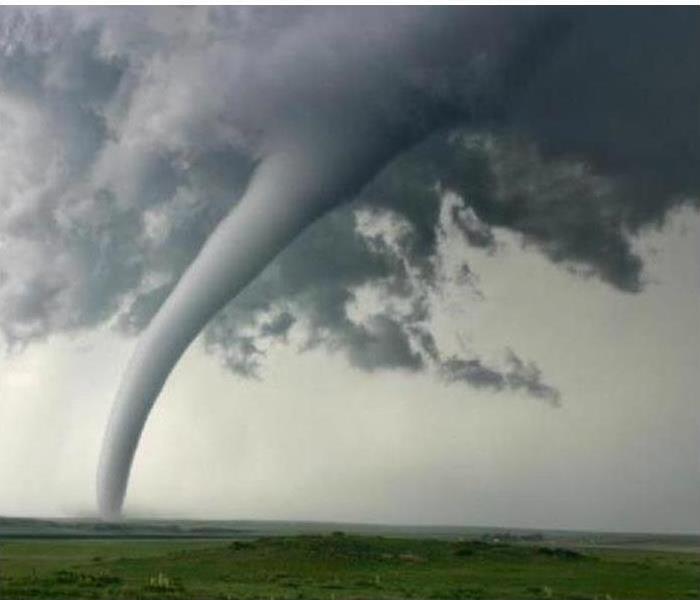Tornado Preparedness in Maine
7/7/2017 (Permalink)
Tornadoes are nature's most violent storm. By definition, a tornado is a violently rotating column of air that extends from the base of the thunderstorm cloud to the ground. While they are rare in Maine when compared to other parts of the country, they can still form and be quite dangerous.
Prior to the development of a tornado, a thunderstorm typically begins to rotate. As this rotation becomes stronger, the chance that a tornado may develop also increases. Although the National Weather Service's Doppler Radar generally can not see the actual tornado, the Radar does detect rotation of the thunderstorm cloud; this gives some indication of the possibility that a tornado may be forming or has formed.
The scale used to measure tornado damage is the Enhanced Fujita scale, commonly referred to as the E-F scale. Based on scientific studies of tornado damage, the original Fujita scale was modified and the new "Enhanced Fujita Scale" was officially implemented in 2007.
- EF-0 - Light damage (winds 65 to 85 mph)
- EF-1 - Moderate damage (winds 86 to 110 mph)
- EF-2 - Considerable damage (winds 111 to 135 mph)
- EF-3 - Severe damage (winds 136 to 165 mph)
- EF-4 - Devastating damage (winds 166 to 200 mph)
- EF-5 - Incredible damage (winds over 200 mph)
Tornadoes and Maine:
Peak tornado activity in northern New England occurs between June and August, but tornadoes have occurred as early as May and as late as November. Most tornadoes occur between 3 and 9 pm and have an average forward speed of about 30 mph. For the 40 year period between 1950 and 1990, 74 tornadoes occurred in Maine. This is an average of about 2 tornadoes per year. During 2016 one tornado touched down in Maine.
Due to the usual short life-span of tornadoes in northern New England, there is often little, if any, advance warning.
Tornadoes in New England generally touch down and then lift off the ground very quickly. Many of the tornadoes that have occurred in the past, have occurred while severe thunderstorm warnings have been in effect. If you hear that a severe thunderstorm warning is in effect for your area, be alert for the possibility of a tornado. A low rotating cloud, large hail, and/or a load roar are all signs that may precede the touchdown of a tornado.
Here are some tornado facts and safety tips:
- Flying debris causes most deaths and injuries in tornadoes
- The safest place in your home during a tornado is your basement.
- Stay away from windows.
- Get out of vehicles or mobile homes, they offer little protection. Seek shelter in a substantial building.
- Do NOT seek shelter under a bridge overpass. Bridge overpasses offer little, if any, protection from wind- driven debris.
Although we can't stop tornadoes or severe storm damage, we can certainly help with the cleanup and restoration after everything has calmed down. When in need, contact SERVPRO of Bangor/Ellsworth at (207)947-0400; we're always here to help!

 24/7 Emergency Service
24/7 Emergency Service
